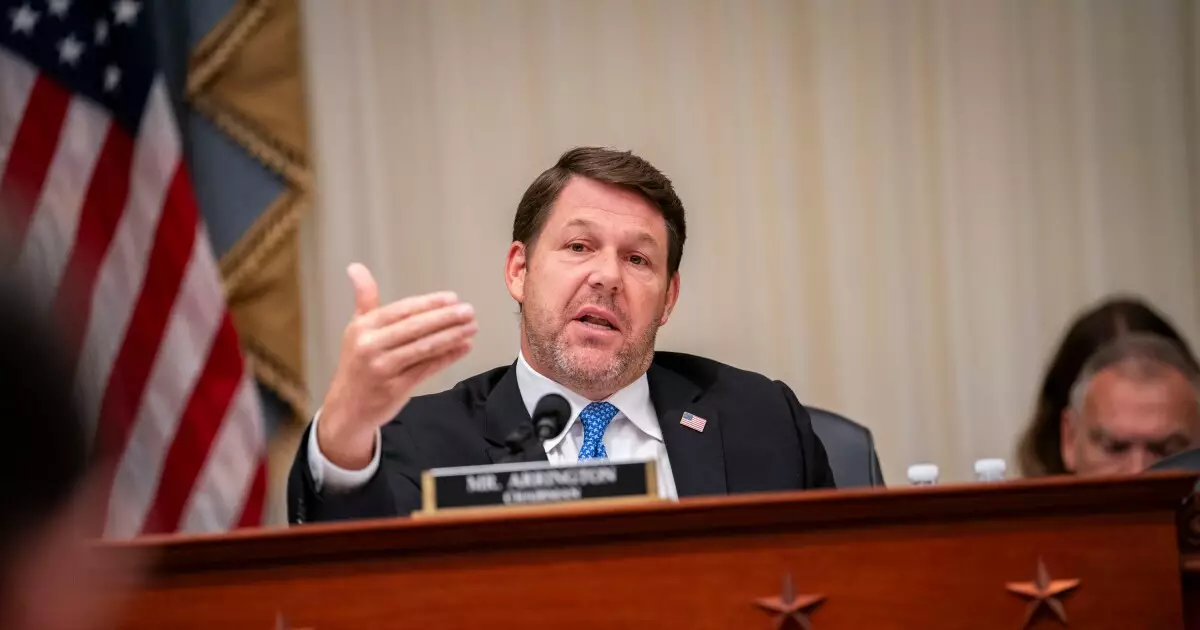House Budget Resolution: A Pivotal Moment for Fiscal Policy Reform

The financing framework for the upcoming budgetary discussions has been laid out as the House Budget Committee sanctioned a budget resolution late Thursday. This development, marked by a strict party-line vote of 21-16 after extensive deliberation spanning twelve hours, signifies a crucial milestone for House Republicans who are navigating through an exceptionally narrow majority. The municipal market watches keenly, aware that this resolution may influence discussions surrounding tax exemptions and potential alterations in fiscal policies.
Imminent Reconciliation Packages
As the House gears up for intricate discussions, it is noteworthy that the Senate is concurrently crafting its own reconciliation plan. This endeavor aims to dismantle several key aspects of the Trump administration’s previously established agenda into two separate bills, signifying a postponement of tax reforms until later in the calendar year. The divergence in strategy underscores the complex, often contentious nature of governance, and illustrates the differing priorities that both chambers contend with as they move forward.
The amendments adopted during the committee assembly will evidently constrain the flexibility of the House Ways and Means Committee in relation to tax cuts. Initially, the resolution proposed an amount of $4.5 trillion that could be allocated for tax reductions, primarily through extensions of the 2017 Tax Cuts and Jobs Act (TCJA). However, the revised resolution introduces critical conditions that could hinder the committee’s ability to raise this amount without corresponding cuts from other areas, specifically a mandated identification of $2 trillion in expenditure reductions by subordinate committees.
Furthermore, this resolution ties the fates of tax cuts directly to expenditure cuts, creating a burdensome scenario whereby the Ways and Means Committee is obligated to adjust their tax cut proposals based on performance in finding other budgetary reductions. This interdependency has the potential to stymie effective tax policy formulations and complicate fiscal responsibility measures.
Debt Ceiling and Fiscal Responsibility
In a proactive move to prevent a fiscal standoff, the resolution additionally seeks to elevate the debt ceiling by $4 trillion. As lawmakers are all too aware, approaching deadlines—often referred to as the “X date”—can lead to serious economic repercussions if not monitored and addressed promptly. The House Budget Chairman, Jodey Arrington, made his stance clear, describing this resolution as a crucial framework for consequential legislation that reflects President Trump’s agenda focused on prioritizing American interests.
Looking Ahead: Reconciliation Timeline
The budget resolution is set to advance to the House floor upon lawmakers’ return from a ten-day recess. With a prepared language framework, the reconciliation process is expected to proceed rapidly once the official resolution is in place. Representative Kevin Hern, presenting at a recent tax policy event, emphasized the urgency of this process and recalled the swift passage of prior legislation regarding the TCJA.
Hern contended that the Ways and Means Committee has been robustly engaged in tax reform deliberations for over a year, even hinting at undisclosed developments that have yet to surface in public discourse. This assertion points towards a significant depth of planning and strategy that remains underreported, potentially leaving stakeholders in the dark regarding forthcoming fiscal policies.
Extending key components of the TCJA stands to cost upwards of $4.7 trillion, inevitably necessitating revenue-generating measures. The implications could escalate the total forecasted budgetary impact to figures between $5 trillion and $11 trillion when considering other priorities of the Trump administration, such as the potential elimination of taxes on tips and Social Security.
The complexity of these numbers raises questions of sustainability and economic viability. Senate Majority Leader John Thune, alongside prominent Republican tax writers, has indicated that their support hinges on a comprehensive package that solidifies the TCJA as a permanent fixture in the U.S. tax code, in contrast to temporary extensions. This dichotomy could present substantial challenges in striving for consensus between both chambers, thereby complicating the reconciliation process.
The path laid out by this House budget resolution is laden with political intricacies and fiscal implications that will undeniably shape the economic landscape for years to come. As negotiations unfold, it remains to be seen how competing interests will reconcile their differences to produce a cohesive, effective fiscal strategy that takes into consideration both economic growth and responsible spending practices.





